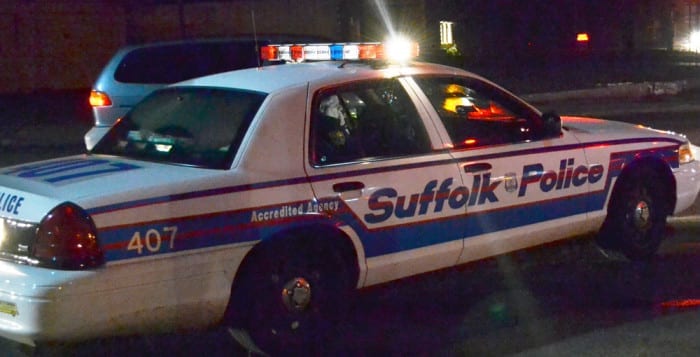Happy Hanukkah to all those who observe from the staff at TBR News Media! May this be a time of joy for you and your family.
D. None of the Above: Preparing a pregnant couple for future battles for family credit
By Daniel Dunaief

We have friends who live close to us who are pregnant. Okay, that sounds weird, right? She’s pregnant, and he looks sheepish, like he’s not sure what’s coming.
That’s not entirely fair. He was socially awkward before he brought his small package of genetic material to the pregnancy party. Why would anyone imagine he would be any different in the months before he makes a head first dive down the rabbit hole into the wonders and challenges of parenthood?
Now, if their families are anything like others I’ve known, they are bound to have a wide range of pre and post delivery discussions.
“Are you going to name the baby after my side of the family?”
“Make sure you put sugar, spice and everything nice in the crib or the baby will become colicky like your Aunt Michelle. She was one of the most miserable babies we’ve ever seen and that’s because her mother forgot about the sugar and spice under the crib.”
One of the most fascinating and sometimes confounding parts of the baby discussion, which can extend well into the years that follow, is the family credit for various traits.
To wit, “He’s incredibly serious and focused just like his Uncle Oswald. That Oswald was a man with a purpose from the time he was born, just like your little baby Joey.”
Or maybe, “Morgan has the same broad smile, laugh or sense of humor as her Aunt Carol.”
Each family can dig in, sharing ways that the developing child has characteristics they are convinced come from one side of the family, often from the speaker who has a proprietary interest in propagating the enduring myth of a family heritage.
Such talk suggests somehow that heredity is much more important than environment. The credit can go beyond physical characteristics such as long eyelashes, rounded shoulders, or sparkling eyes: they can include artistic talent, an ability to relate to other people, or a proficiency for languages.
That somehow seems un-American. After all, we the people generally believe that hard work can help people become proficient in any area, developing the kind of talent that differentiates them in their field and allowing them to control their destiny.
Such strong genetic links, while providing an appealing way to connect to ancestors and to those who aren’t around to smile and play with their descendants, is akin, if you’ll pardon the pun, to linking someone’s last name to their profession.
“Oh, the Jones family? Sure, they all became teachers. The Berringtons went into the clothing business, while the Shimmers all became dentists. They all have such gifted dental hands.”
Such blanket statements about where someone’s exceptionalism originated also throws the other sides of the family into the shadows, as if their only role were to ensure the ongoing survival of the dominant and more important family tree.
Family trees, however, like the trees that people decorate around this time of year, have bilateral symmetry, with people decorating each side in popcorn, cranberries and/or holiday lights.
Rarely does anyone do a deep dive into the other side of a family, learning whether the Jones family had faster legs, a quicker wit, better grades or a stronger work ethic.
Then again, the point of these claims isn’t to be scientific, thorough or even fair. It’s a way to connect the children of today with those who came before. Even if people don’t believe in reincarnation, focus on genes, or contemplate the enduring qualities of any family culture, they might feel tremendous joy and comfort hoping that this person’s unwritten life includes future chapters that reflect a familial past that need not be exclusive to one branch, one side or one person.
Story weaving may help give a developing life context and meaning. Ideally, those attributes and connections may remind the family and this new person about the kind of strong and accomplished roots that can help him or her develop into the kind of person he or she chooses to be, which would be a win for everyone.
Between You and Me: An afternoon filled with talk of love
By Leah S. Dunaief

This past weekend we traveled to Boston for a remarkable bridal shower. While I have been to many bridal showers before, this one was in honor of my first grandchild’s fiancee. Life is made up of firsts, of course, and we enjoy each of them in a special way. So up to Massachusetts we went for a new adventure.
I thought about my oldest grandson on the drive north. I still keenly remember the thrill of becoming a grandmother, of witnessing the beginning of the next generation. How lucky we grandparents are to reach that moment. I cherish a particular memory of having this adorable toddler running toward me as he entered the room, arms out for a hug, yelling “Grandma! Grandma!” on his arrival with his parents for a visit. Yes, I really was a grandma, I marveled then to myself, before scooping him up in my arms for a proper welcome.
After all, it’s a rarefied club one can aspire to but one is powerless to join on one’s own.
And that little person, grown up now to a handsome man who gives bear hugs, is extending the family with a new chapter, and I was going to celebrate with his soon-to-be wife.
It’s a phenomenon, this marriage bit, when you think about it. Two people meet, they fall in love, decide they want to spend the rest of their lives together, and the next thing you know, a small army of strangers rush to hug you and welcome you to the family. That’s what happens at a bridal shower, even as the avowed purpose is to help the newly weds set up their home with small gifts.
In addition, though, the two sides of the family get a chance to meet before the wedding, check each other out under joyful circumstances, then, no longer strangers, look forward to seeing each other at the nuptials. Maybe it’s not an accident that the shower is a women’s only affair. We have been known as the more critical of the sexes. If we have met and enjoyed the prospective extension of the family, the wedding will most likely go smoothly. Or so history might suggest.
Speaking of history, where did the idea of a bridal shower come from?
Here are two stories. The first dates back to 16th century Holland, where gifts were given to the bride to prepare her for her new life as a married woman if either she was too poor to buy them herself or her father didn’t approve of the marriage and wouldn’t provide a dowry. One such instance involved a father who wanted his daughter to marry a wealthy pig farmer, but she insisted on marrying a miller, who was from a lower class. The girl’s friends then supplied gifts to help her start a home.
The second story is from the Victorian Era. Ladies in those days would gather to wish the bride well, bringing small gifts like notes and home goods. These would be put in an open parasol, and they would “shower” them over her.
Today the bride’s friends and female relatives gather to wish the new bride well and help prepare the home, and that is exactly what happened in the lovely club setting on the water that we attended. My grand daughter-in-law’s shower was organized by her friend since early childhood. The day was bright and sunny on the outside, and so was the mood inside. We met some of her friends, her immediate family, her aunts and cousins, and enjoyed a delicious brunch together. We traded stories of how some of the women had found their husbands, where they now lived, how many children they had, what sort of work they did, in short the usual conversations when strangers first meet. The hit of the day was the clever 1 1/2 year-old son of the hostess who roamed among us and tried to put his sneaker on my foot. Gifts were opened by the bride, pictures were taken, and then slowly we dispersed, promising to see each other at the wedding, now an extended family.
Area vets advise caution for vulnerable dogs amid talk of new illness
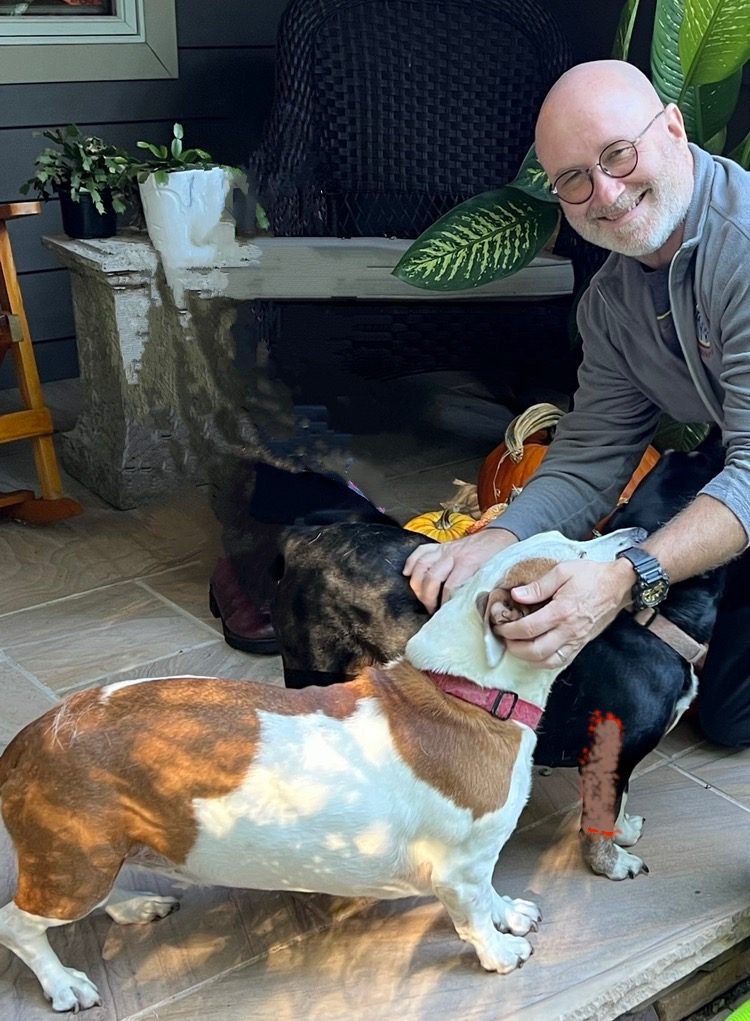
Long Island veterinarians are scratching their heads, unsure of whether reports of a new and as yet poorly-defined respiratory illness in dogs is a new threat or whether the ongoing talk is something of a shaggy dog tale.
“No one knows what it is,” said Steven Templeton, a veterinarian at Animal Health & Wellness in Setauket. “Nobody seems to have a clue. Some suggested it was a weird new bacteria, while others suggested it was viral.”
As of now, a potential respiratory infection, which hasn’t been well-defined and differs in its origin depending on whom you ask, could be contributing to making some dogs in other parts of the country sicker than they might otherwise be from the usual assortment of canine maladies that strike at this time of year.
Templeton has seen an increase in respiratory cases in his practice, although none of the cases has become severe.
Some of the illnesses he’s treated are coming from dogs that have no known exposure to other dogs, which “makes you wonder if they’re not catching it from dogs, and if they’re catching it from people,” Templeton added. “It could be a variant of the flu or COVID.”
When Templeton graduated from veterinary school in 1989, he said the conventional wisdom was that dogs didn’t give people viruses and vice versa. Now, he said, that’s turned around, and humans and their best friends can and do share illnesses.
With conflicting reports that this illness could be viral or bacterial, the infection could be a grab bag description for more than one health threat, Templeton said.
As of now, this mysterious dog illness has reportedly affected dogs in 14 states.
At Animal Emergency Services in Middle Country Road in Selden, veterinarian Melody Ribeiro has had one pneumonia case in a dog, which was straightforward in its treatment.
The dog recovered.
Advice for dog owners
Dog owners have been asking about reports of this infection.
Ribeiro suggested people who are planning to travel check out the facility where they are bringing their pet to make sure they know how the dogs are handled.
Vets also recommended asking kennels or other boarding facilities if they isolate dogs who are coughing or might be contagious.
Templeton, who finds someone who can care for his dogs at home when he travels, added that minimizing group dog contact at this point might also help.
Similar to the advice health care providers who work with people offered during COVID, veterinarians suggested that dog owners should take special precautions with beloved pets who might be in vulnerable categories or who have underlying medical conditions.
Dogs who are particularly young or old, have conditions that weaken their immune system, have poor organ function or are not fully immunocompetent should stay away from gatherings where they might contract viral or bacterial infections.
“We say the same thing for animals that we say for humans for COVID,” said Templeton. “If they have underlying issues, stay away from public [gatherings]. They could be asking for trouble.”
Other dog challenges
Apart from the threat of one or a combination of infections, veterinarians also suggested that dogs continue to struggle with the carry-over from a pandemic that kept many of their human friends home for extended periods of time.
Dogs “feed off the emotions of their owners,” said Templeton. Owners who are stressed or who are angrier than normal can bring tension into their homes that can make their dogs act out.
Dog owners are increasingly asking veterinarians for drugs to help their dogs cope with anxiety or emotional problems.
“The drug approach is minimally effective,” Templeton said. He urged people to get their dogs training and to work with their pets to minimize their distress.
“Anxious owners have anxious dogs,” added Ribeiro.
Holiday risks
During the holidays, dogs can also get into foods they shouldn’t eat, which can lead to pancreatitis, Ribeiro said.
With the legalization of pot, dogs are also consuming products that have tetrahydrocannabinol, or THC.
The accidental consumption of THC has occurred over the last few years, with dogs coming in who need medical attention, Ribeiro said. Veterinarians urged people to be cautious about where they store their gummies or other products that might prove an irresistible attraction to their dogs.
Woman killed in Rocky Point single-vehicle crash
Suffolk County Police Seventh Squad detectives are investigating a single-vehicle crash that killed a Coram woman in Rocky Point on Dec. 3.
Christina Yannotti was driving a 1994 Jeep Grand Cherokee southbound on Rocky Point Yaphank Road, between Route 25A and Whiskey Road, when the vehicle left the roadway and crashed into a wooded area at approximately 10:20 p.m. Yannotti, 28, was pronounced dead at the scene.
Anyone with information on the crash is asked to contact the Seventh Squad at 631-852-8752.
Celebrate the Festival of Lights on the North Shore
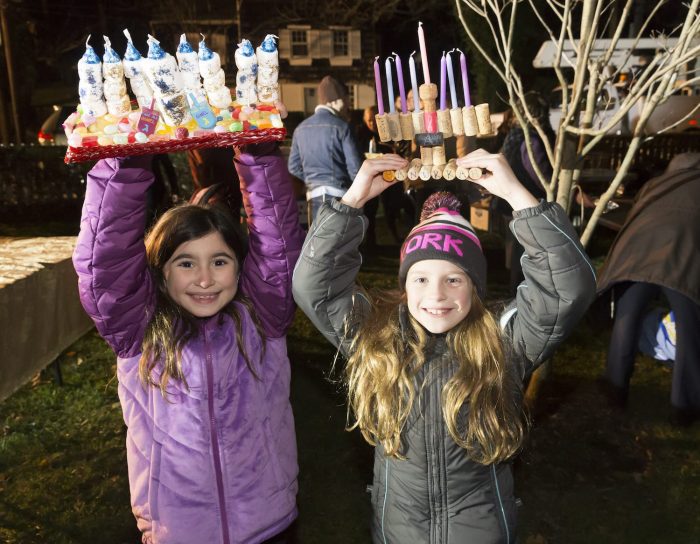
By Heidi Sutton
Hanukkah begins at sundown on Thursday, December 7 and ends on the evening of Friday, December 15 this year. Here are some menorah lighting ceremonies, parades and celebrations in our neck of the woods.
Commack/Dix Hills
— Chabad of Mid-Suffolk, 318 Veterans Hwy., Commack presents a Grand Menorah Parade to The Chai Center, 501 Vanderbilt Parkway, Dix Hills on Dec. 10 at 6 p.m. The grand menorah lighting and Chanukah Party will follow at The Chai Center with doughnuts and latkes. RSVP at ChabadMidSuffolk.com/parade
— Join the Suffolk Y JCCC, 74 Hauppauge Road, Commack for a Menorah Lighting and Shine a Light on Anti-Semitism event on Dec. 13 at 7 p.m. 631-462-9800
East Setauket
Village Chabad, 360 Nicolls Road, East Setauket will host a Chanukah Car Parade and Grand Menorah Lighting with a Chocolate Gelt Drop on Dec. 10 starting at 4 p.m. with latkes, donuts, music, Johnny Peers & The Muttville Comix dog show and more. $10 per person in advance at MyVillageChabad.com/LightOverDark, $15 at the door. 631-585-0521
Farmingville
Join the Town of Brookhaven for a Menorah Lighting at Town Hall, One Independence Hill, Farmingville on Dec. 7 at 6 p.m. followed by entertainment, hot latkes and donuts. 631-451-6100
Greenlawn
The Greenlawn Civic Association will host a Menorah Lighting Ceremony and Hanukkah celebration at Harborfields Public Library, 31 Broadway, Greenlawn on Dec. 11 at 6 p.m. www.greenlawncivic.org
Huntington
Chabad of Huntington Village will host a Grand Menorah Lighting at the Huntington Village Winter Wonderland at Main Street and Wall Street on Thursday, Dec. 7 at 4:30 p.m.
Kings Park
The Kings Park Chamber of Commerce hosts a Menorah Lighting/Christmas Tree Lighting Ceremony at Veterans Plaza, 1 Church Street, King Park on Dec. 3 at 4 p.m. Enjoy holiday music selections followed by invocation and welcome remarks from the chamber with hot chocolate and cookies. Held rain or shine. 631-269-7678
Lake Ronkonkoma
Take part in a Menorah Lighting at Raynor Park, 174 Ronkonkoma Ave., Lake Ronkonkoma on Dec. 7 at 7 p.m. Hosted by the Ronkonkoma Chamber of Commerce. 631-963-2796
Port Jefferson Station
The Port Jefferson Station/Terryville Chamber of Commerce will host its annual Menorah Lighting at the Chamber Train Car, corner of Route 112 and Nesconset Highway, Port Jefferson Station on Dec. 7 from 4 to 5 p.m. 631-821-1313.
St. James
The community is invited to the St. James Menorah Lighting Ceremony at The Triangle, Route 25A and Lake Ave., St. James on Dec. 7 at 5 p.m., Dec. 8 at 4 p.m. and Dec. 9 to 14 at 5 p.m. Includes light refreshments. Nonperishable food donations accepted for the local food pantries. 631-584-8510
Smithtown
The Town of Smithtown and Chabad of Mid-Suffolk will hold its annual Menorah Lighting Ceremony at Town Hall, 99 West Main St., Smithtown on Dec. 11 at 5 p.m.. 631-360-7512
Man killed in single vehicle crash in Medford
Suffolk County Police Fifth Squad detectives are investigating a single car crash that killed a man in Medford on Dec. 1.
Kristopher Muller was driving a 2019 Dodge Ram pickup northbound on Hospital Road when he lost control of the vehicle, which crossed over East Woodside Avenue and into a wooded area, where it struck multiple trees, at 9:41 p.m. Muller, 33, of Mastic, was pronounced dead at the scene by a physician assistant from the Office of the Suffolk County Medical Examiner.
Anyone with information on the crash is asked to contact the Fifth Squad at 631-854-8552.
Eternal flame: Tesla Science Center launches $3M Mission Rebuild campaign
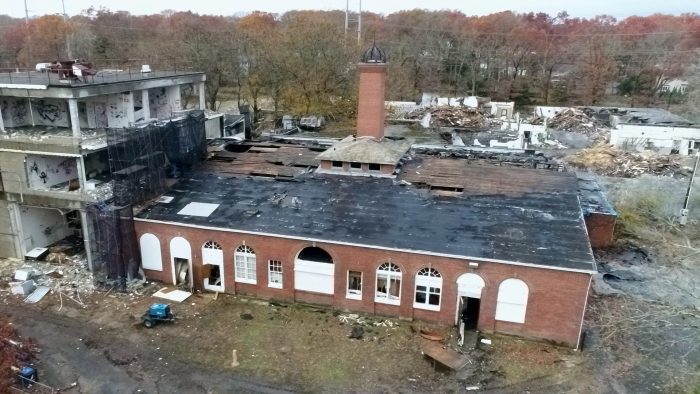
Just days before the fire erupted, the Tesla Science Center at Wardenclyffe was marching along a path toward prosperity.
Center officials held a gala Nov. 16, announcing a $1.15 million installment of capital funding toward its anticipated $20 million restoration and redevelopment project.
Earlier, the center broke ground on the project, with demolition ongoing.
The center was ushering in a new era in its storied history.
“We were never in better shape,” said TSCW Executive Director Mark Alessi. “We were finally making the progress we had been working so hard for for many years.”
That’s when the flames broke loose.
Last Tuesday, Nov. 21, a conflagration — the cause of which is still unknown — enveloped the historic building on-site, designed by famed architect Stanford White.
In the aftermath, center officials are working to remediate the situation. During a press event on Tuesday, Nov. 28, Mark Thaler, partner at Thaler Reilly Wilson Architecture & Preservation of Albany, reported that the original building was “fireproof for the most part,” noting that the original brick walls remain standing after the fire.
“We have lost some of the roof structure, which will be able to be restored, and we’re poised and ready to do that,” he said, adding that the ensuing stages include cleaning out the building, securing the walls and drying out the interior.
Mission Rebuild
Given the extent of the damages, the center is now calling upon benefactors from both near and far to bolster the restoration work.
Coined Mission Rebuild, the nonprofit has launched a $3 million emergency fund drive on Indiegogo. Mission Rebuild represents a separate fundraising effort from the $20 million redevelopment campaign.
Public officials from across levels of government attended Tuesday’s event, pledging their support.
“This is a really important historic site — not just for this county or this state or this country but worldwide,” said New York State Sen. Anthony Palumbo (R-New Suffolk). “We will do everything we can without question on the state level to continue to get the funding you need to get this project to the end.”
Deputy Suffolk County Executive Jon Kaiman said, “Buildings can burn down and then be rebuilt. The ideas behind them — the person, the history, the narrative that was created over 100 years ago — still exist.”
The deputy county executive continued, “Because the story behind it is so strong, so important, so relevant, we know that we can all stand together and continue this journey that was started so long ago.”
Suffolk County Legislator-elect Chad Lennon (R-Rocky Point) thanked the local firefighters “for taking such care” in extinguishing the fire while preserving the structure. Despite the setback to the organization’s momentum, he pledged to help the center continue carrying out its mission.
“It was one step back, and we’re going to take two steps forward,” Lennon maintained.
Also attending the press event, Town of Brookhaven Councilwoman Jane Bonner (R-Rocky Point) sang an optimistic tune: “Like a phoenix rising from the ashes, this Tesla Center will rise as well,” she forecasted. “We will help you raise your money. We will get you back to where you were,” adding, “At the end of the day, Tesla was successful — and so will the Tesla Science Museum and this organization.”
To donate to Mission Rebuild, please visit www.indiegogo.com/projects/fire-at-tesla-s-lab-immediate-restoration-needed.
Editorial: Channeling Tesla — A path to preserve history, promote science and advance progress

Tragedy recently struck our community.
The Tesla Science Center at Wardenclyffe, a regional and international treasure nestled in the heart of Shoreham, went up in flames last Tuesday, Nov. 21.
While the cause of the fire is unknown, the damages to the historical structure on-site are extensive. This sad news comes as the nonprofit organization was reaching its peak, embarking upon a $20 million redevelopment project that is now set back for some time.
Considerable effort and planning lie ahead to remediate the wreckage. Fortunately, we can all lend a hand in getting the center back on its feet.
On Tuesday, Nov. 28, center officials launched Mission Rebuild, a $3 million fundraising campaign to finance the necessary restoration work. This is a separate fundraiser from the $20 million campaign for site redevelopment. We also can empathize with the Tesla Center.
Historic preservation is an arduous, often expensive endeavor. Local not-for-profits and private benefactors invest their time and dollars in preserving historically and architecturally significant structures for our community’s benefit. These places connect us to our shared past, linking one generation of Long Islanders to the next.
If we fail to invest in historic preservation, then we run the risk of losing our sense of place and appreciation for the land. This very rootlessness can give way to unfettered demolition, development, sprawl and other ills that may imperil our collective way of life.
The brick building of revolutionary scientist Nikola Tesla’s laboratory at Wardenclyffe — its roof severely damaged by the fire — was designed by famed architect Stanford White, whose roots lie in Suffolk’s North Shore. This intersection of architectural and scientific history is unrivaled anywhere else, which is another crucial reason for us to intervene.
And what could be a more noble cause than science, that exploration into the depths of the unknown, unraveling the mysteries of the universe and elevating our human understanding?
Along the North Shore, we are blessed with a rich scientific tradition spanning several institutions, such as Cold Spring Harbor Laboratory, Brookhaven National Lab and Stony Brook University. Tesla’s lab is a part of that complex. Without it, our homegrown scientific community would be diminished.
As lovers of history, science, and community, we can all lend a hand in this effort. This is a call to people everywhere to help restore this vital place in our community and world.
To donate to Mission Rebuild, please visit www.indiegogo.com/projects/fire-at-tesla-s-lab-immediate-restoration-needed.
Devastating fire engulfs Tesla Science Center in Shoreham
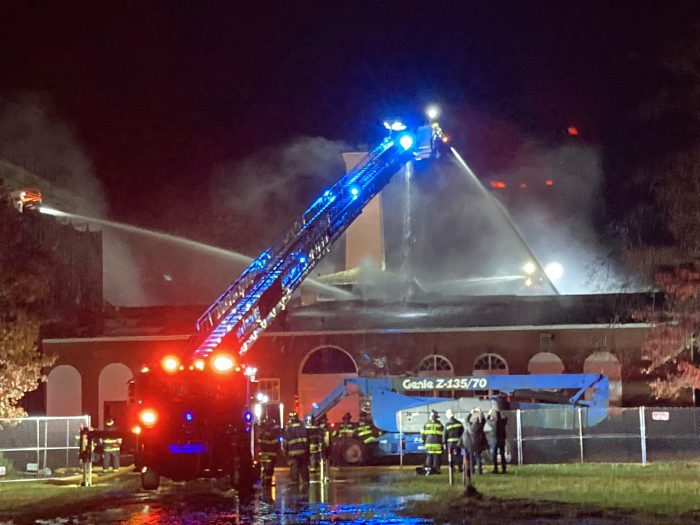
By Samantha Rutt
A devastating fire broke out at the Tesla Science Center at Wardenclyffe on Tuesday evening, Nov. 21, causing significant damage to the historic building. Firefighters from 11 departments responded shortly before 5 p.m. to find the laboratory engulfed in flames.
The fire, still under investigation, was reported to have ignited again early Wednesday morning, causing extensive damage to the main building’s roof and interior. While no injuries were reported, losing this important historical site devastated the scientific community.
The Tesla Science Center said in a statement released on Thanksgiving, “We are thankful to the deputy fire coordinators at the Suffolk County Department of Fire, Rescue and Emergency Services — and to the fearless teams from the Brookhaven National Laboratory Fire Department [and all other responding departments]. Their relentless efforts to protect our community are a beacon of hope and strength.”
“The cause of the fire is still unknown,” science center representative Mark Grossman said. “It’s still under investigation, though they’ve ruled out arson. There’s no concern about it being a criminal offense — it was likely accidental. But they’re still in the investigation stage.”
The Tesla Science Center at Wardenclyffe was the last remaining laboratory of famed inventor Nikola Tesla. One of the most influential figures in the history of electricity, he conducted groundbreaking experiments at the site in the early 1900s.
The bones of the building, constructed in 1901, have been reported to appear intact. However, the full extent of the damage is yet to be determined.
“It brings a sense of relief to share that the structural integrity of the building dating back to 1901 seems to have withstood the ordeal,” Marc Alessi, executive director of the nonprofit, said in a statement. “This resilience is a testament to its original robust construction and durability.”
The site will be evaluated and assessed by the site engineer, historical architect and structural engineer, along with the Suffolk County Police Department, the Brookhaven Town fire marshal and the county’s Department of Fire, Rescue and Emergency Services, for damages in the coming days.
The center was undergoing renovation at the time of the fire. The renovations were intended to restore the building to its original condition and make it more accessible.
“There was a capital project that would be started shortly,” Grossman said. “We’re embarking on a $20 million renovation that would turn it into a true museum open to the public.”
In an interview, Grossman addressed fundraising efforts to raise money to repair what was damaged.
“There’s going to need to be an infusion of some donations to get things back to where they were,” he told TBR News Media. “It’s going to delay the capital project somewhat. I can’t tell you the exact amount of delay.”
The Tesla Science Center is a nonprofit organization that relies on donations from the public. In the wake of the fire, the organization has launched a fundraising campaign to help rebuild the laboratory.
The fire has sparked an outpouring of support from the community. Many people have expressed sadness at the science center’s loss and pledged their support for restoration efforts.
Amid the distressing news, Vladimir Božović, consul general for the Republic of Serbia and the consulate general team, pledged to provide “any necessary assistance” to the science center in the coming period.
The consulate’s statement further notes, “Our thoughts are with all those who hold deep respect and admiration for the invaluable work and dedication demonstrated by the Tesla Science Center in preserving the legacy of Nikola Tesla, a great Serbian-American inventor.”






